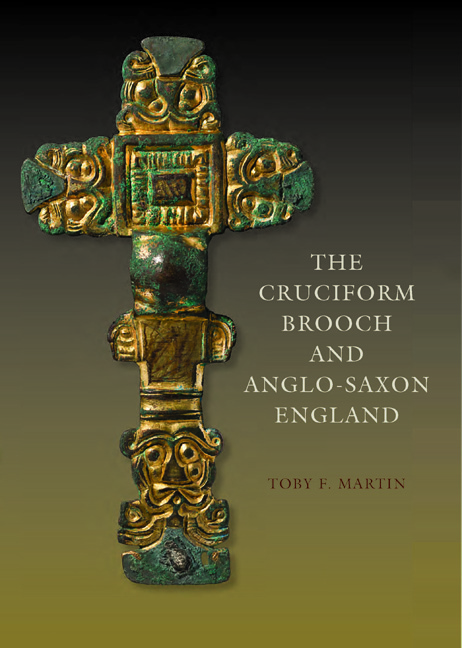Book contents
- Frontmatter
- Dedication
- Contents
- List of Illustrations
- Preface
- Acknowledgements
- 1 The Anglian Brooch par excellence
- 2 A New Typology for Cruciform Brooches
- 3 Building a Chronological Framework
- 4 Cycles of Exchange and Production
- 5 Migrants, Angles and Petty Kings
- 6 Bearers of Tradition
- 7 Cruciform Brooches, Anglo-Saxon England and Beyond
- Appendix 1 Cruciform Brooches by Type
- Appendix 2 Cruciform Brooches by Location
- Appendix 3 A Guide to Fragment Classification
- Bibliography
- Index
- Plate Section
Appendix 3 - A Guide to Fragment Classification
Published online by Cambridge University Press: 05 May 2015
- Frontmatter
- Dedication
- Contents
- List of Illustrations
- Preface
- Acknowledgements
- 1 The Anglian Brooch par excellence
- 2 A New Typology for Cruciform Brooches
- 3 Building a Chronological Framework
- 4 Cycles of Exchange and Production
- 5 Migrants, Angles and Petty Kings
- 6 Bearers of Tradition
- 7 Cruciform Brooches, Anglo-Saxon England and Beyond
- Appendix 1 Cruciform Brooches by Type
- Appendix 2 Cruciform Brooches by Location
- Appendix 3 A Guide to Fragment Classification
- Bibliography
- Index
- Plate Section
Summary
With the rapidly expanding number of finds recorded on the Portable Antiquities Scheme database there is an increasing need to provide a framework for classifying fragments. Of the 1,137 cruciform brooches from the Portable Antiquities Scheme database in the present dataset, only seventy-two (6 per cent) are complete (i.e. have at least one of each symmetrical component, see Table 1, above p. 10). Despite the incomplete nature of most metal-detected cruciform brooches, 568 of them, almost exactly 50 per cent, are actually assignable at least to the group level, if not a specific sub-group or type. However, this leaves 569 fragments without a classificatory designation in the typology presented in Chapter 2. They include side-knobs, head-plates and feet, but exclude bows and catch-plates because these fragments alone are not exclusively assignable to the cruciform brooch series, but could equally well belong to small long or great square-headed brooches, for instance. Top-knobs are diagnostically classifiable by the head-plate fragments to which they usually adhere. Due to the highly incomplete nature of many of these fragments, they can only tell us a limited amount. Nevertheless, diagnostic characteristics of some can often assign them to either group 2 or 3, and hence therefore phase B. Obviously, if a fragment can be identified as belonging to phases A and C then they must also belong to groups 1 or (the latter half of) 4. There are in fact far fewer difficulties with classifying group 4 fragments, which are almost always assignable to at least the sub-group if not type level. Of the fragmented side-knobs, most of those with a half-round section belong to phase B. The case is not so clear cut for those with a fully round section, as they sporadically appear among group 2 brooches. Most head-plates are also assignable to either phase A or B. A small head-plate with a fully round top-knob can usually be placed in one of the group 1 sub-groups with a degree of confidence, but those that cannot can generally be placed at least in group 1 and therefore phase A.
- Type
- Chapter
- Information
- The Cruciform Brooch and Anglo-Saxon England , pp. 311 - 314Publisher: Boydell & BrewerPrint publication year: 2015



